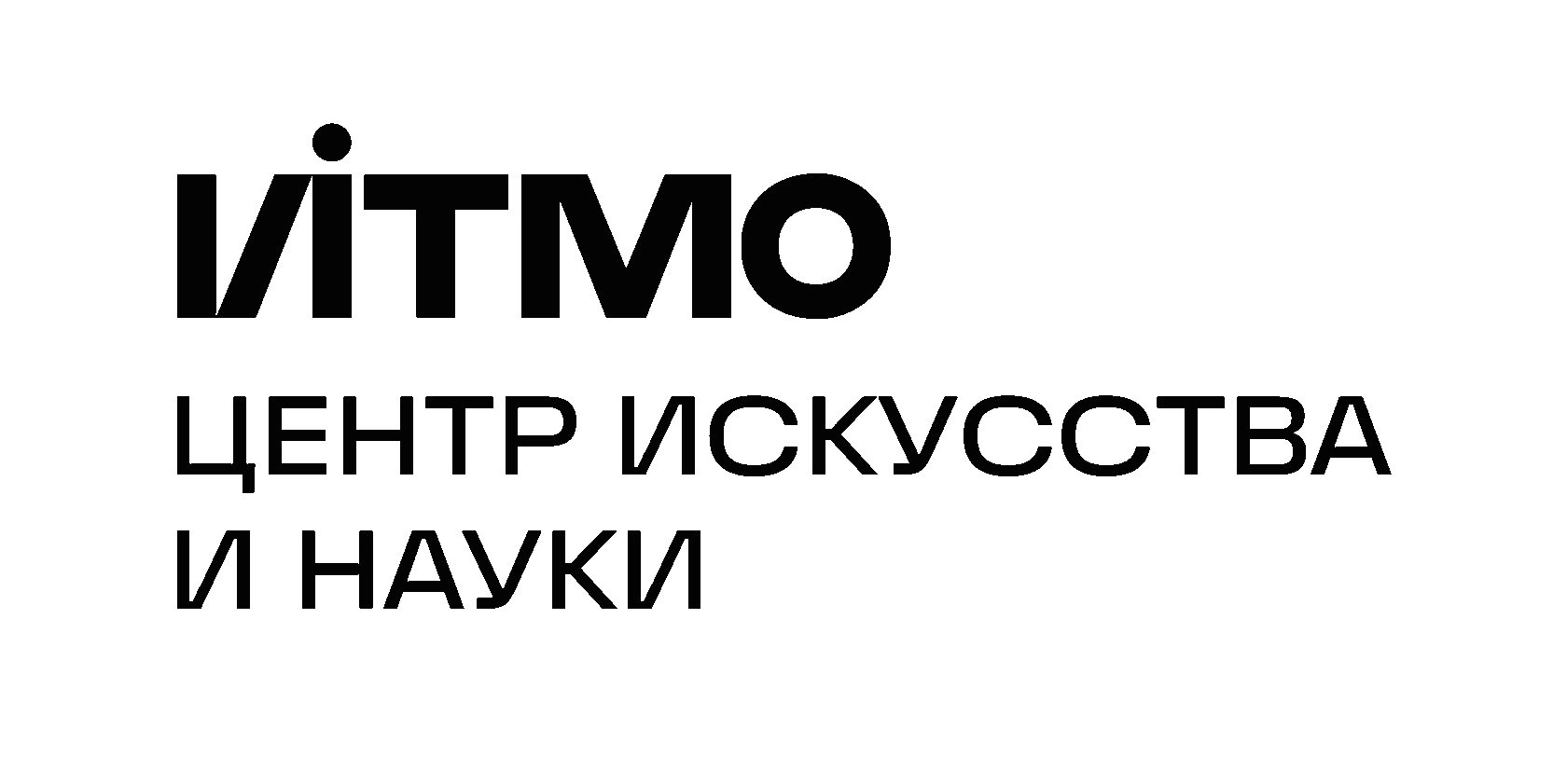
Access modes
Exhibition of diploma works of Art & Science graduates at the Art Residence of ITMO University
St. Petersburg, Birzhevaya line, 16
September 19 - October 11


Things are exactly what they are, and yet never what they seem to be, and hence they are practically indistinguishable from those creatures we call people.
Timothy Morton "Being ecological"
"Access modes" is a term used by Timothy Morton to describe the way we interact with things / objects. A thing / object should be understood in a phenomenological sense: like any object, subject, phenomenon and connections between them, in other words, anything. Access modes include cutting, eating, thinking, ignoring, photographing, hammering, drawing, storytelling, microscope exploration, chipping, collider acceleration, scientific writing, statistics, and any kind of use. In everyday experience, people tend to make things neutral and "tamed", they notice their existence only when things break or behave in a non-standard way.
Scientists, armed with all sorts of tools and technologies, extract data from things, and this makes things "strange". Artists use other modes of access, including themselves in the mode of viewing data and objects, while artists, entering into a dialogue with strange things, not only gain access to things, but also open access to themselves, new connections are created. The task of scientists and artists is similar: they explore things (the world) without trying to fit them into neutral systems that are accepted not to notice.
An important feature of this exhibition is that the artists, participating in it, created their works balancing between science and art. Each artist made his way to his object, using his unique set of means of access, creating actual connections between himself and the object of study. Art, science and personal experience form a new object, included in the relationship with the gallery space and the relationship between other objects in this room (among the visitors of this exhibition). It is this experience of artistic inclusion that opens the most relevant mode of access to things today, which allows one to live scientific data and methods into personal experience, to bridge the gaps between people and non-people. Looking closely at each work, you can feel and hear this attunement between things. Attunement to things is something we can do, even if the perception of things in their entirety is impossible.
Scientists, armed with all sorts of tools and technologies, extract data from things, and this makes things "strange". Artists use other modes of access, including themselves in the mode of viewing data and objects, while artists, entering into a dialogue with strange things, not only gain access to things, but also open access to themselves, new connections are created. The task of scientists and artists is similar: they explore things (the world) without trying to fit them into neutral systems that are accepted not to notice.
An important feature of this exhibition is that the artists, participating in it, created their works balancing between science and art. Each artist made his way to his object, using his unique set of means of access, creating actual connections between himself and the object of study. Art, science and personal experience form a new object, included in the relationship with the gallery space and the relationship between other objects in this room (among the visitors of this exhibition). It is this experience of artistic inclusion that opens the most relevant mode of access to things today, which allows one to live scientific data and methods into personal experience, to bridge the gaps between people and non-people. Looking closely at each work, you can feel and hear this attunement between things. Attunement to things is something we can do, even if the perception of things in their entirety is impossible.
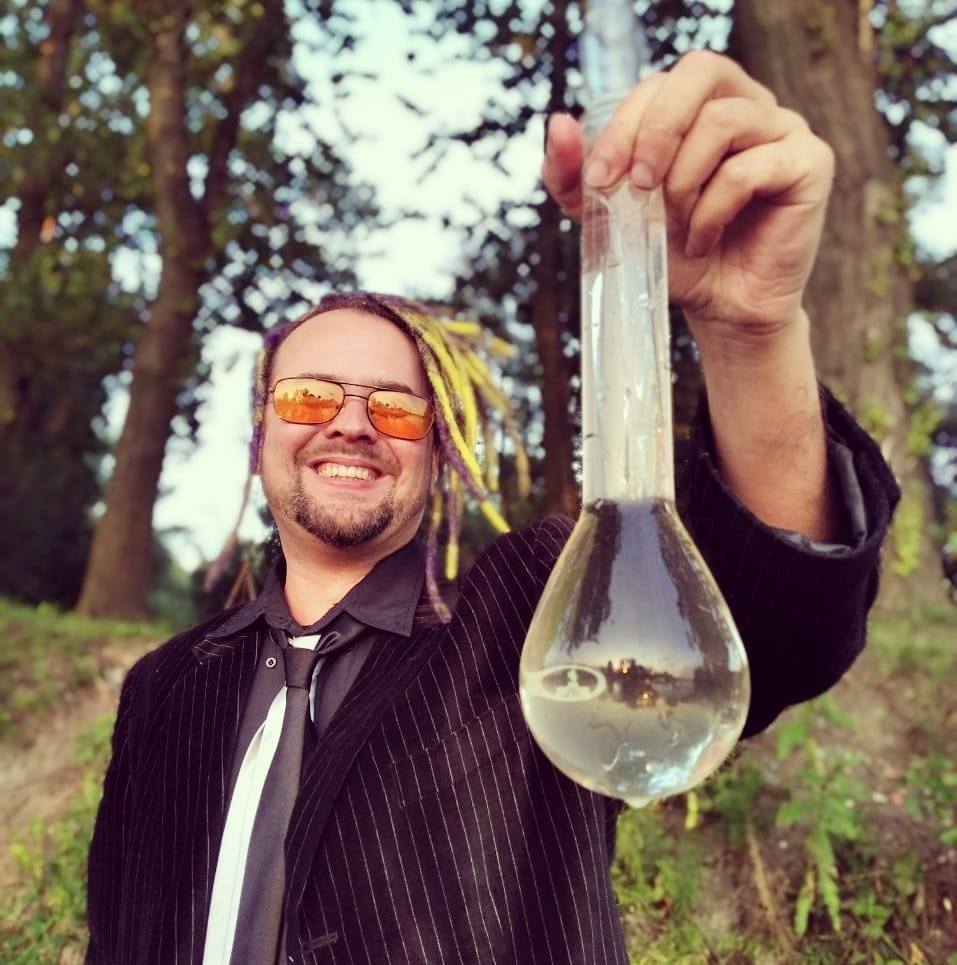
Artur Konstantinov
Exhibition curator
Projects
Chudo-polyana 2.0
Alena Koroleva, Marta Mikhailova (BIOROBOTY 019)
Krasnoyarsk
Victoria Romanova
Physarum
the fortuneteller
the fortuneteller
Svetlana Sidorova
Athena
Ethan Avila
Historical meditations
Ethan Avila
Touchless
Laura Elidedt Rodrigues
GULAG Retrospective
Pisarevskaya Anna

Content Oriented Web
Make great presentations, longreads, and landing pages, as well as photo stories, blogs, lookbooks, and all other kinds of content oriented projects.
Alena Koroleva, Marta Mikhailova (BIOROBOTY 019)
Scientific supervisor: Ekaterina Nikitina
Scientific advisor: Galina Konechnaya
Sound designer: Anton Shchegolev
Engineers: Aleksey Feskov, Rostislav Shchtennikov
Illustrators: Maria Ovsyannikova, Maria Ivleva, Ksenia Gorlanova, Igor Belov, Vitana Makovskaya, Anastasia Sizova, Uliana Marinova, Ekaterina Popovich, Ekaterina Lipavskaya, Elena Isho, Julia Kuzmina, Anastasia Zolina.
Scientific supervisor: Ekaterina Nikitina
Scientific advisor: Galina Konechnaya
Sound designer: Anton Shchegolev
Engineers: Aleksey Feskov, Rostislav Shchtennikov
Illustrators: Maria Ovsyannikova, Maria Ivleva, Ksenia Gorlanova, Igor Belov, Vitana Makovskaya, Anastasia Sizova, Uliana Marinova, Ekaterina Popovich, Ekaterina Lipavskaya, Elena Isho, Julia Kuzmina, Anastasia Zolina.
Chudo-polyana 2.0
It is a free space for the interaction between people and five Chudo-polyana's inhabitants: Valeriana dioica, Sesleria caerulea, Ajuga reptans, Сirsium rivulare, and Primula elatior. Plants integrate into the gallery space, become residents, cease to be the Red Data Book's representatives, and interact with the visitors, who can choose the mode of interconnection: observation, self-removal, tactile contact, verbal appeal, expansive actions, chilling etc.
Alena Koroleva (b.1995) - originally from Vologda, lives and works in St.Petersburg. Multimedia artist, a member of BIOROBOTY 019 group.
Her art practices lie in the fields of science art, multidisciplinary research, and particularly in the studies of plant-human interactions. Her artistic message is usually conveyed by interactive installations.
Marta Mikhailova (b. 1996) originally from St.Petersburg, where she lives and works. Graphic designer, multimedia artist, a member of BIOROBOTY 019 group.
BIOROBOTY 019 group follows the ideology of idiotism and profanation, and tends to create ironic remarks on topics, proposed by numerous art competitions. Satirical reflection on society and posthumanism ideas unites the group's projects, which boldly enter the field of science art.
Her art practices lie in the fields of science art, multidisciplinary research, and particularly in the studies of plant-human interactions. Her artistic message is usually conveyed by interactive installations.
Marta Mikhailova (b. 1996) originally from St.Petersburg, where she lives and works. Graphic designer, multimedia artist, a member of BIOROBOTY 019 group.
BIOROBOTY 019 group follows the ideology of idiotism and profanation, and tends to create ironic remarks on topics, proposed by numerous art competitions. Satirical reflection on society and posthumanism ideas unites the group's projects, which boldly enter the field of science art.
About project
Team
Authors
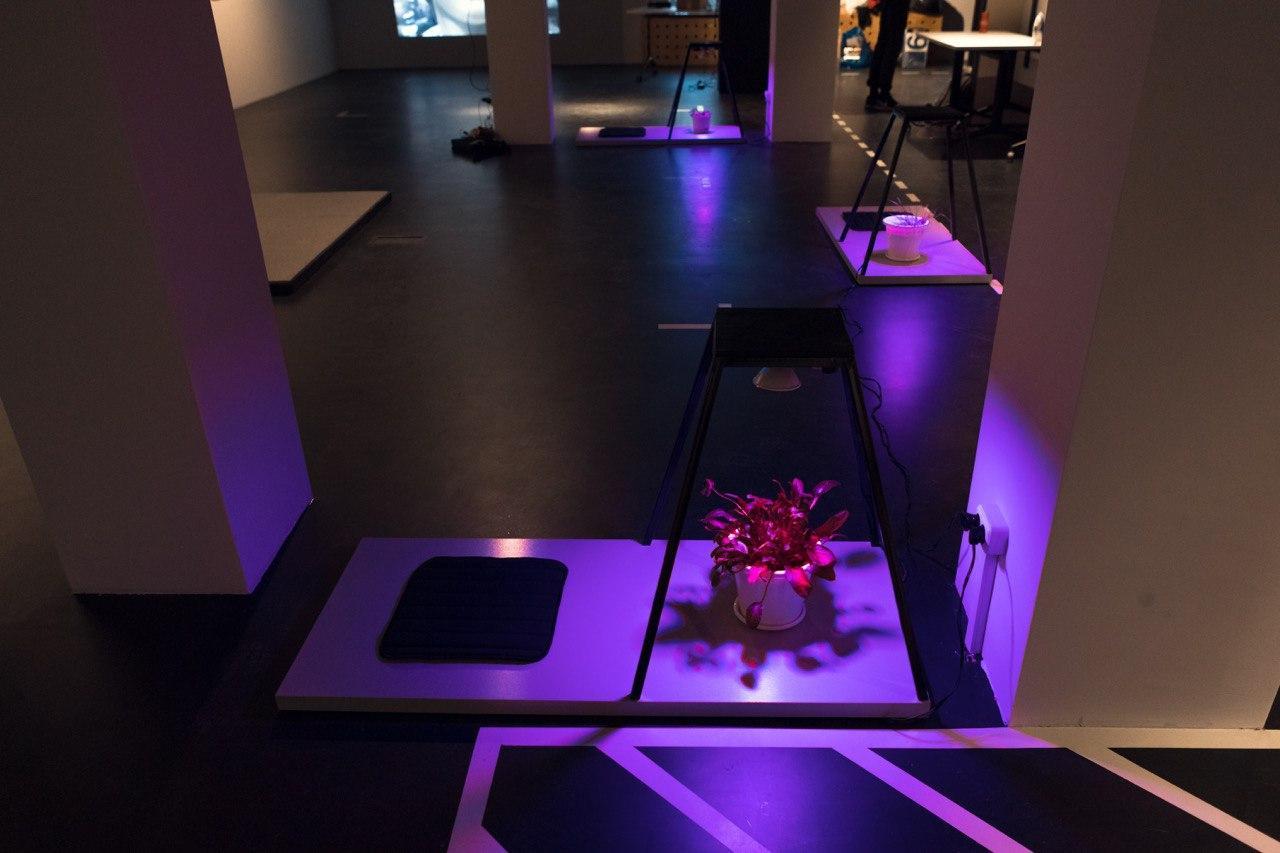
Interactive installation

Content Oriented Web
Make great presentations, longreads, and landing pages, as well as photo stories, blogs, lookbooks, and all other kinds of content oriented projects.
Artist: Victoria Romanova
Scientific consultants: Sergei K. Stafeev (scientific advisor), Galina E. Romanova (head of the laboratory of computer methods for optical control), Irina L. Livshitz (head of research laboratory for computer-aided design of optical-information and energy saving systems)
Engineer: Alexey Feskov
Sound Designer: Anton Schegolev
Scientific consultants: Sergei K. Stafeev (scientific advisor), Galina E. Romanova (head of the laboratory of computer methods for optical control), Irina L. Livshitz (head of research laboratory for computer-aided design of optical-information and energy saving systems)
Engineer: Alexey Feskov
Sound Designer: Anton Schegolev
Krasnoyarsk
A mirror optical system made about 40-60 years ago, was found within the walls of ITMO University. All that is known for certain about the system is the inscription Krasnoyarsk on the frame. The development has been going on for so long that the documentation is almost impossible to find. Conclusions can only be drawn from the fragmentary memories of the university staff and from the study of the operation of the optical system.
After some research, it turned out that this is a telescopic system being developed for a secret government project. Most likely this is a system for detecting enemy weapons. But it's impossible to say for sure. The optical system "Krasnoyarsk" is an example of the incredible technological development of the Soviet Union, the result of the work of a team of highly skilled engineers, a symbol of a breakthrough in optics and astronautics. But nevertheless, no one needed this device, it was not used for its intended purpose, it did not even serve for educational or entertainment purposes. For unknown reasons, "Krasnoyarsk" for many years stood in the corner, collecting dust and serving as a stand for papers.
The fate of the device, the symbolism of its existence and the lack of accurate information about it served as the basis for the installation. In my eyes the device began to come to life and remind me of my worries about my own life and purpose. Lack of answers and understanding of reality, these are topics that concern me. I live my experience through this device, draw parallels with myself and understand myself in the process of this interaction. The text you are hearing is excerpts from my thesis. They sound simultaneously, merge and interrupt each other. This is how I perceive information about the world - chaotic pieces, from which you can create your own unique picture.
After some research, it turned out that this is a telescopic system being developed for a secret government project. Most likely this is a system for detecting enemy weapons. But it's impossible to say for sure. The optical system "Krasnoyarsk" is an example of the incredible technological development of the Soviet Union, the result of the work of a team of highly skilled engineers, a symbol of a breakthrough in optics and astronautics. But nevertheless, no one needed this device, it was not used for its intended purpose, it did not even serve for educational or entertainment purposes. For unknown reasons, "Krasnoyarsk" for many years stood in the corner, collecting dust and serving as a stand for papers.
The fate of the device, the symbolism of its existence and the lack of accurate information about it served as the basis for the installation. In my eyes the device began to come to life and remind me of my worries about my own life and purpose. Lack of answers and understanding of reality, these are topics that concern me. I live my experience through this device, draw parallels with myself and understand myself in the process of this interaction. The text you are hearing is excerpts from my thesis. They sound simultaneously, merge and interrupt each other. This is how I perceive information about the world - chaotic pieces, from which you can create your own unique picture.
Victoria Romanova (b. 1996)
Contemporary artist with an engineering education in the design and calculation of optical systems. This knowledge is realized in her art projects in combination with emotional perception of the world and laughing at what is happening. Since 2019, she has been a member of the BIOROBOTY 019 group. She was born in the city of Angarsk, Irkutsk Region. Now she lives and works in St. Petersburg.
Contemporary artist with an engineering education in the design and calculation of optical systems. This knowledge is realized in her art projects in combination with emotional perception of the world and laughing at what is happening. Since 2019, she has been a member of the BIOROBOTY 019 group. She was born in the city of Angarsk, Irkutsk Region. Now she lives and works in St. Petersburg.
About project
Team
Author


Content Oriented Web
Make great presentations, longreads, and landing pages, as well as photo stories, blogs, lookbooks, and all other kinds of content oriented projects.
Programming: Alexander Karavayev, Sviatoslav Ponomarev, Alexey Zubakov
Engineering: Alexey Feskov
Sound: Anton Schegolev
Engineering: Alexey Feskov
Sound: Anton Schegolev
Physarum the fortuneteller
In the face of the world crises and global instability, we all need answers and guidance, the possibility of long-term planning, and predictability of the future. This all became possible!
Physarum the fortuneteller is the result of the joint work of programmers and science art enthusiasts. Its mastermind is the physarum polycephalum, a unique living organism endowed with non-human intelligence and used by Japanese scientists for robot manipulations. Strengthened by computer technologies Physarum the fortuneteller builds personalized recommendations based on your biometrics and machine learning algorithms.
Leave anxiety and uncertainty in the past. Physarum the fortuneteller knows more about you than you think.
Physarum the fortuneteller is the result of the joint work of programmers and science art enthusiasts. Its mastermind is the physarum polycephalum, a unique living organism endowed with non-human intelligence and used by Japanese scientists for robot manipulations. Strengthened by computer technologies Physarum the fortuneteller builds personalized recommendations based on your biometrics and machine learning algorithms.
Leave anxiety and uncertainty in the past. Physarum the fortuneteller knows more about you than you think.
Svetlana Sidorova (b.1996) multimedia artist from St.Petersburg, a member of BIOROBOTY 019 group. She graduated from the Petroleum Faculty of the Mining University, but preferred spiritual improvement to material well-being. She works in the technique of ironic comprehension and desperate search for herself.
About project
Team
Authors

Content Oriented Web
Make great presentations, longreads, and landing pages, as well as photo stories, blogs, lookbooks, and all other kinds of content oriented projects.
Technical Collaborators: Alexey Feskov, Alona Bugrova, Maria Bystramovich
Athena
A looping projection of an endless 3D scene involves the bust of the Greek goddess Athena which animates in an arbitrary fashion and is surrounded in dark synth music as her heart lies in front. The heart beats only when the mortals (humans) interact with her Instagram account through different forms such as likes, comments and follows. This is the inversion of the position of gods in society.
Both my works explore the relationship between the psyche and its human relationship regarding the connection between the inner and the outer world in forms of juxtaposed digital symbols which aid me to uncover the essence of the humane. With influences from distinct areas such as art and psychology, new insights are generated from both simple and complex narratives.
Ever since I was a child I have been fascinated by the essential understanding of the human psyche and its relation with artificial life and had an obsession with greek statues and our understanding of god. What starts out as yearning soon becomes debased into an agent of chaos, leaving only a sense of nihilism and the possibility of a new order to arise.
As shifting forms become distorted through a dance between order and chaos, the viewer is left with a melancholic hymn to the rediscovery of the self...
Ever since I was a child I have been fascinated by the essential understanding of the human psyche and its relation with artificial life and had an obsession with greek statues and our understanding of god. What starts out as yearning soon becomes debased into an agent of chaos, leaving only a sense of nihilism and the possibility of a new order to arise.
As shifting forms become distorted through a dance between order and chaos, the viewer is left with a melancholic hymn to the rediscovery of the self...
About
Team
Author

Content Oriented Web
Make great presentations, longreads, and landing pages, as well as photo stories, blogs, lookbooks, and all other kinds of content oriented projects.
Historical meditations
This meditative piece is a montage of several GANs created with famous sculptures and statues of historical characters that have influenced me as an artist. The reinterpretation of the images plays with the idea of reviving these characters and male their aesthetics more live-like.
Ethan Avila
«orn in Mexico City in 1994, having a painter as an uncle and influenced by his father's love for cinema and science fiction Ethan began to be introduced into the world of the arts early in his life. Having lived in three different countries in his early years, Ethan had a very unique and distinct perspective on life, throughout his life, Ethan has always been attracted to the arts and the theme of existence and Artificial Life which later became recurring in Ethan's work.
"Both my works explore the relationship between the psyche and its human relationship regarding the connection between the inner and the outer world in forms of juxtaposed digital symbols which aid me to uncover the essence of the humane. With influences from distinct areas such as art and psychology, new insights are generated from both simple and complex narratives.
Ever since I was a child I have been fascinated by the essential understanding of the human psyche and its relation with artificial life and had an obsession with greek statues and our understanding of god. What starts out as yearning soon becomes debased into an agent of chaos, leaving only a sense of nihilism and the possibility of a new order to arise.
As shifting forms become distorted through a dance between order and chaos, the viewer is left with a melancholic hymn to the rediscovery of the self... "
«orn in Mexico City in 1994, having a painter as an uncle and influenced by his father's love for cinema and science fiction Ethan began to be introduced into the world of the arts early in his life. Having lived in three different countries in his early years, Ethan had a very unique and distinct perspective on life, throughout his life, Ethan has always been attracted to the arts and the theme of existence and Artificial Life which later became recurring in Ethan's work.
"Both my works explore the relationship between the psyche and its human relationship regarding the connection between the inner and the outer world in forms of juxtaposed digital symbols which aid me to uncover the essence of the humane. With influences from distinct areas such as art and psychology, new insights are generated from both simple and complex narratives.
Ever since I was a child I have been fascinated by the essential understanding of the human psyche and its relation with artificial life and had an obsession with greek statues and our understanding of god. What starts out as yearning soon becomes debased into an agent of chaos, leaving only a sense of nihilism and the possibility of a new order to arise.
As shifting forms become distorted through a dance between order and chaos, the viewer is left with a melancholic hymn to the rediscovery of the self... "
About project
Author


Content Oriented Web
Make great presentations, longreads, and landing pages, as well as photo stories, blogs, lookbooks, and all other kinds of content oriented projects.
Technical Collaborators: Alexey Feskov andA nna Osipenkova
Supervisor: Ekaterina Skorb.
Supervisor: Ekaterina Skorb.
Touchless
A installation with flasks culturing bacterial cellulose, with sensors that detect the light that the visitor projects into the bacterial-skin, imitating the effect that light has in a modified bacterial cellulose with nanoparticles. The light through the bacterial cellulose is transformed into an electrical signal triggering vibrations in the platform, the vibration can be received by a second visitor. The distance between the participants consider the new normative in during the COVID-19 pandemia and allow the persons to send a somatic sensation two each other.
*This installation is part of a bigger project that pretends to create a full human suit, as a second skin with the new material and is created in collaboration with Evgenii Khopotov.
Initial description of the thesis project: (LONGER RESEARCH)
The current world situation, in isolation, shows us how fast-changing is our present and how different it could be our near future. We suffered an immediate change in the normative behavior and also attributes of dress appearance.
This work fantasizes about the future, the scenario with an exacerbated need for distance. prolonged sensory deprivation can foster loss of connection with reality and depression, this becomes a driver for finding new ways of communication that could return to us the feeling of touching another person.
Such a solution could be the creation of a communicating system, a second skin, expanding the sensory capabilities of our body, capable of perceiving touch with light. The shape of the system emerges as a second-skin garment based on artificial skin-like membranes constituted by bacterial cellulose and nano-particles of titanium dioxide, translating light touches into somatic vibrations stimuli in the area where the touch was made.
*This installation is part of a bigger project that pretends to create a full human suit, as a second skin with the new material and is created in collaboration with Evgenii Khopotov.
Initial description of the thesis project: (LONGER RESEARCH)
The current world situation, in isolation, shows us how fast-changing is our present and how different it could be our near future. We suffered an immediate change in the normative behavior and also attributes of dress appearance.
This work fantasizes about the future, the scenario with an exacerbated need for distance. prolonged sensory deprivation can foster loss of connection with reality and depression, this becomes a driver for finding new ways of communication that could return to us the feeling of touching another person.
Such a solution could be the creation of a communicating system, a second skin, expanding the sensory capabilities of our body, capable of perceiving touch with light. The shape of the system emerges as a second-skin garment based on artificial skin-like membranes constituted by bacterial cellulose and nano-particles of titanium dioxide, translating light touches into somatic vibrations stimuli in the area where the touch was made.
Laura Elidedt Rodrigues
Originally from Mexico and lives and works in St.Petersburg, some call her a bio-artist, she dislikes the labels, and she just investigates her own life, composition and meaning through scientific and artistic practices.
Often involved in educational practices, her goal is to reveal the hidden connection between all organisms and matters, her artistic message is usually conveyed by interactive installations, mixing part of her cultural heritage and scientific background, often we can appreciate a monstrous or akward aesthetics as part of her intention to show different paradigms.
Originally from Mexico and lives and works in St.Petersburg, some call her a bio-artist, she dislikes the labels, and she just investigates her own life, composition and meaning through scientific and artistic practices.
Often involved in educational practices, her goal is to reveal the hidden connection between all organisms and matters, her artistic message is usually conveyed by interactive installations, mixing part of her cultural heritage and scientific background, often we can appreciate a monstrous or akward aesthetics as part of her intention to show different paradigms.
About
Team
Author


Content Oriented Web
Make great presentations, longreads, and landing pages, as well as photo stories, blogs, lookbooks, and all other kinds of content oriented projects.
GULAG Retrospective
The repressive GULAG system existed for thirty years, during which time hundreds of thousands of the Soviet Union citizens became its victims. Many of them are still alive, but the memory of the GULAG is becoming a forgotten page of the past. In addition, today in the digital culture age, consumption of information is moving to a different level — visual. Given this, the topic of the repressive system of the USSR remains barely covered in the digital space due to its complexity and extremely sensitive data.
To solve this problem we created the «GULAG Retrospective» project using neural networks to visualize a victim of the GULAG system. According to the computer interpretation, the victim of the GULAG is a man who looks directly at the viewer, his gaze is disturbed by something. He looks about 35 or 40 years old. In appearance, the man resembles a cultural figure or a party member, as indicated by his costume.
Through the use of a neural network, we can see how a computer thinks and how it reproduces historical memory. It is also an interesting experience in viewing history from a different perspective. The use of artificial intelligence raises questions such as whether artificial intelligence can engage in myth-making or we see its memories of the pictures it has seen. Will historians of the future be able to determine where the truth is and where the fiction created by the computer is? And is it reasonable to consider this a myth, or is it a historical memory of the computer?
To solve this problem we created the «GULAG Retrospective» project using neural networks to visualize a victim of the GULAG system. According to the computer interpretation, the victim of the GULAG is a man who looks directly at the viewer, his gaze is disturbed by something. He looks about 35 or 40 years old. In appearance, the man resembles a cultural figure or a party member, as indicated by his costume.
Through the use of a neural network, we can see how a computer thinks and how it reproduces historical memory. It is also an interesting experience in viewing history from a different perspective. The use of artificial intelligence raises questions such as whether artificial intelligence can engage in myth-making or we see its memories of the pictures it has seen. Will historians of the future be able to determine where the truth is and where the fiction created by the computer is? And is it reasonable to consider this a myth, or is it a historical memory of the computer?
About
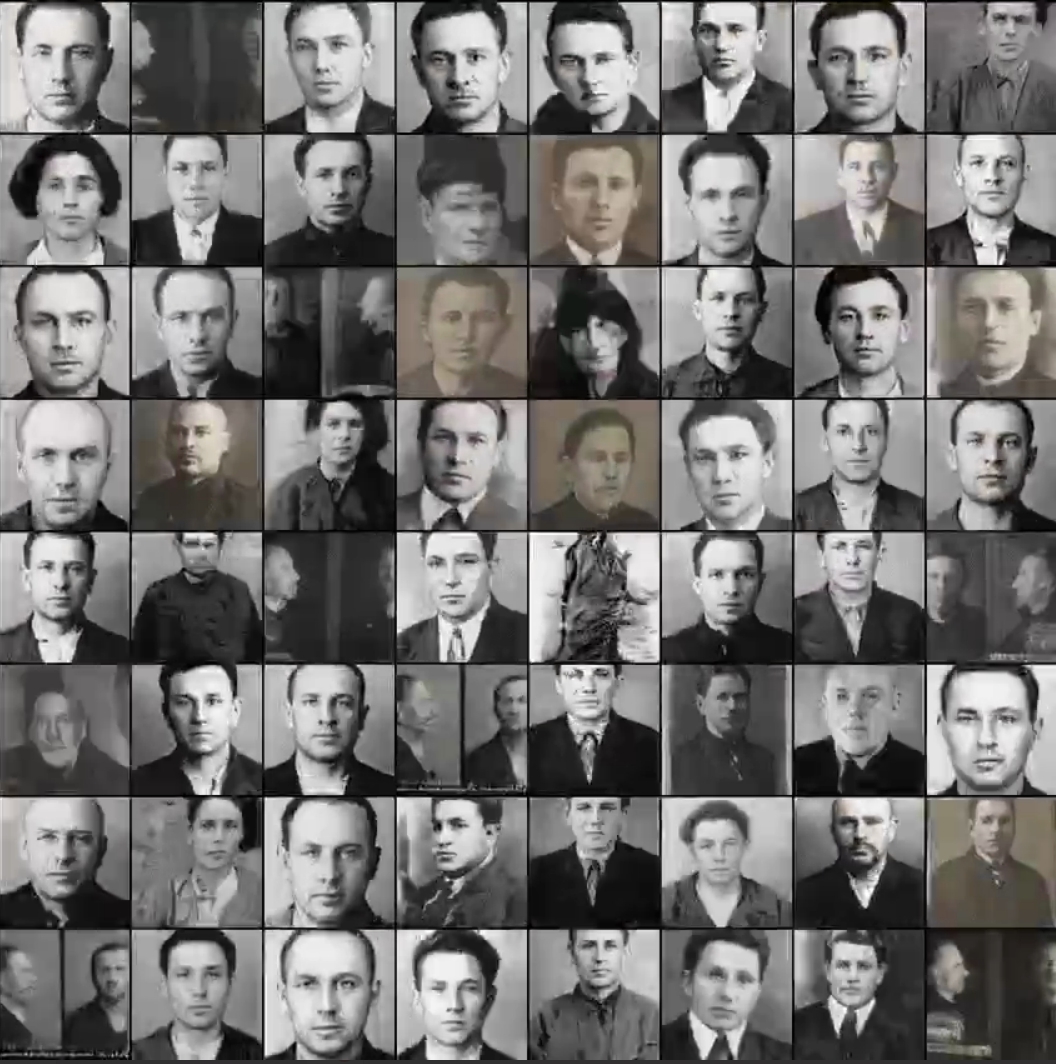
Pisarevskaya Anna
AIR (Art.ITMO.Residency) is a hybrid art space of the Art & Science Center of ITMO University, which is a gallery and workshop, as well as an art residency for interdisciplinary artists.
Visitors can stroll through the exhibition together with art mediators who will tell about artistic projects and curatorial intentions.
Art mediation takes place daily at 19.00 ( registration required) on weekdays and 18.00 on weekends.
Exhibition opening hours: Wednesday to Friday from 12:00 to 21:00.
Visitors can stroll through the exhibition together with art mediators who will tell about artistic projects and curatorial intentions.
Art mediation takes place daily at 19.00 ( registration required) on weekdays and 18.00 on weekends.
Exhibition opening hours: Wednesday to Friday from 12:00 to 21:00.

